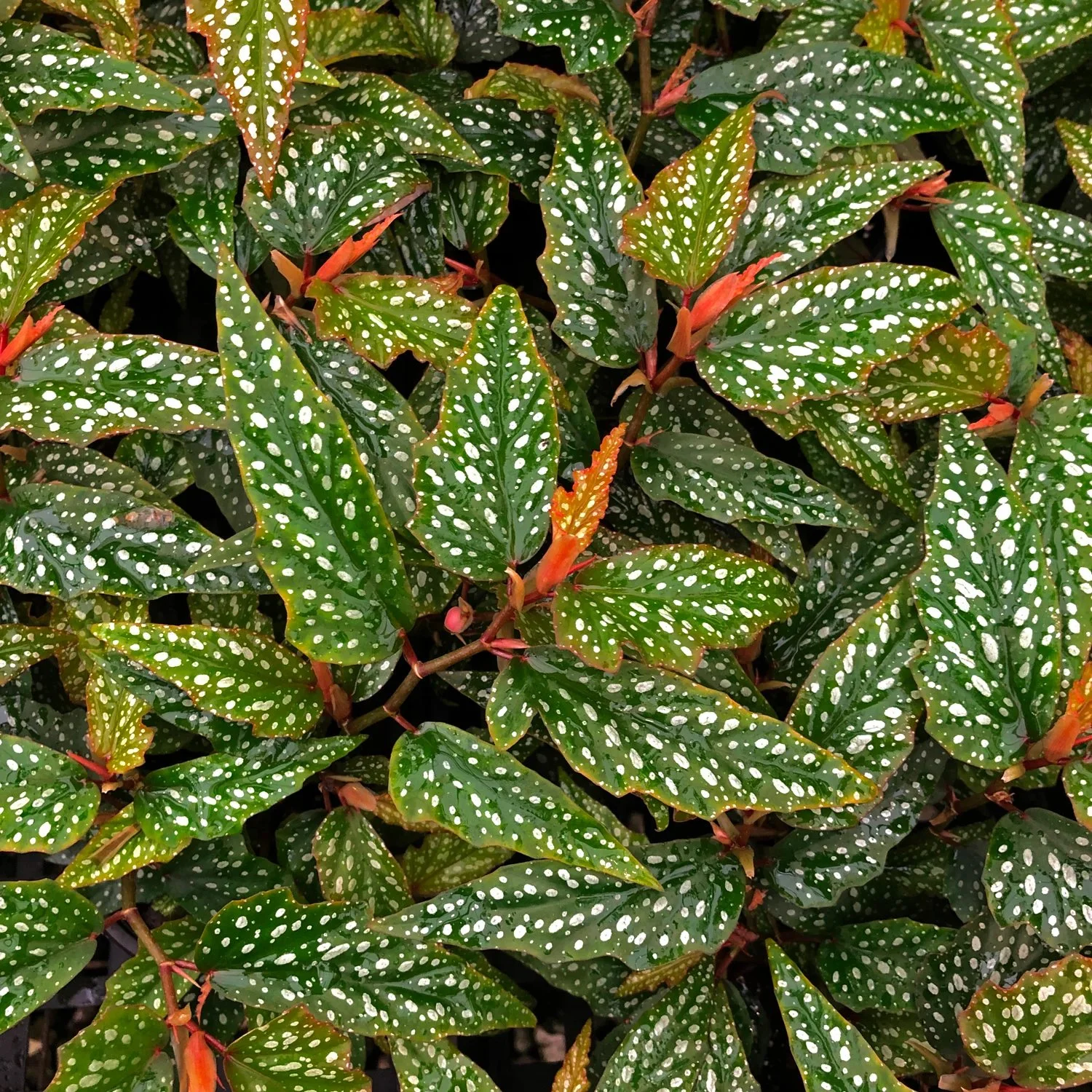Begonia
Begonia
Angel Wing Begonia
Cane Begonias
Care Guide
-
Angel Wing Begonias do best in medium to bright indirect light. They can grow in lower light levels, but will have stunted to no new growth and less of their iconic spot pattern on their leaves. Brighter light will keep your begonia looking its best. Some begonias can tolerate a small amount of direct sunlight, but their delicate leaves can quickly burn, especially newly grown leaves. Watch carefully for signs of burning (bleached, dry, or brown leaves) and move it out of the direct light as soon as possible.
-
Keep the potting mix for begonias always slightly moist, but not soggy. A consistent watering schedule is key, and if you notice dry, brown tips and leaf margins increase the frequency of watering. Never let your begonia dry out completely, as they are not drought tolerant.
-
Angel Wing Begonias need warmer temperatures, they do best in 65 - 85F. They cannot tolerate anything below 50F, so keep away from cold windows and drafts during the winter.ext goes here
-
They do best in higher humidity environments like a bathroom or kitchen, and benefit from the occasional misting. Typical household conditions are usually fine, but if you notice dry brown edges on your leaves, increase the humidity by misting more frequently or moving it to a more humid location.iption
-
The soil should retain moisture but be extremely well draining. A fine, rich, yet somewhat airy and free-draining mix is ideal. Whatever pot your begonia is in must have drainage holes to ensure water doesn’t collect in the bottom and cause the delicate roots to rot.
-
All begonias are mildly toxic to people and pets if the stems or leaves are ingested. Those tissues contain soluble calcium oxalates which can cause nausea and / or vomiting. The roots and tubers of begonias contain oxalic acid and are more toxic than the foliage if ingested. If roots or tubers are ingested by people or pets, they should be seen by a medical professional immediately.


